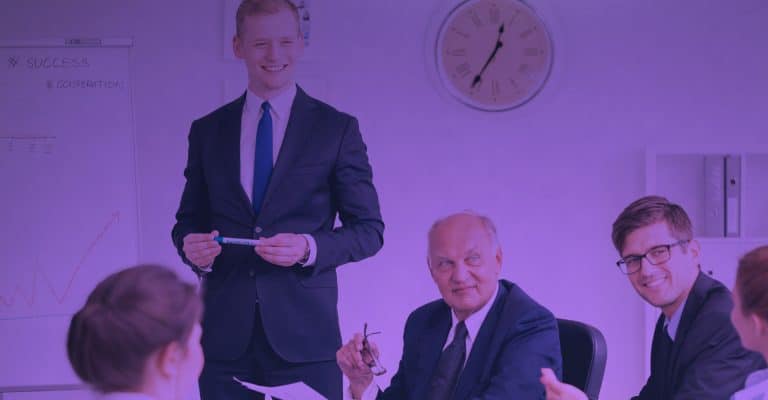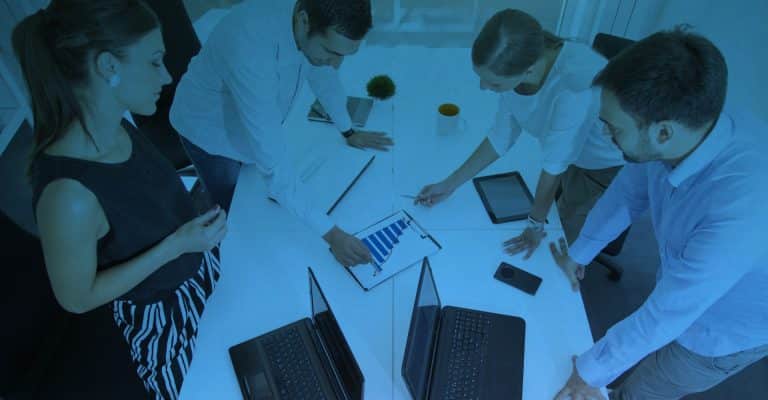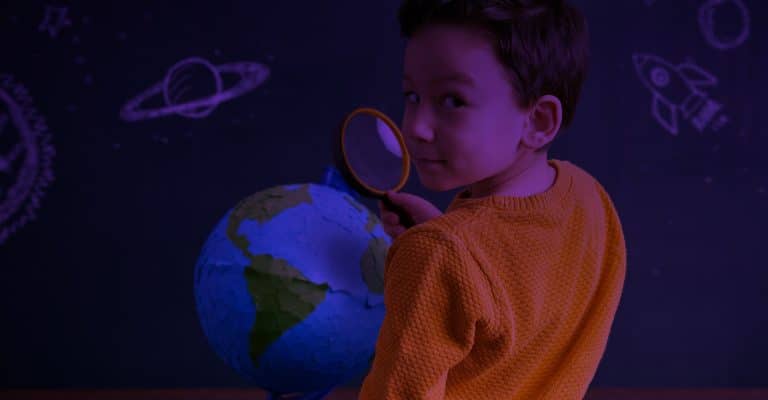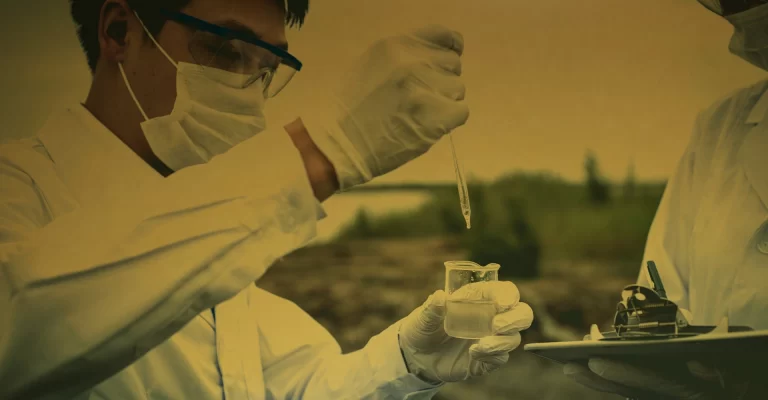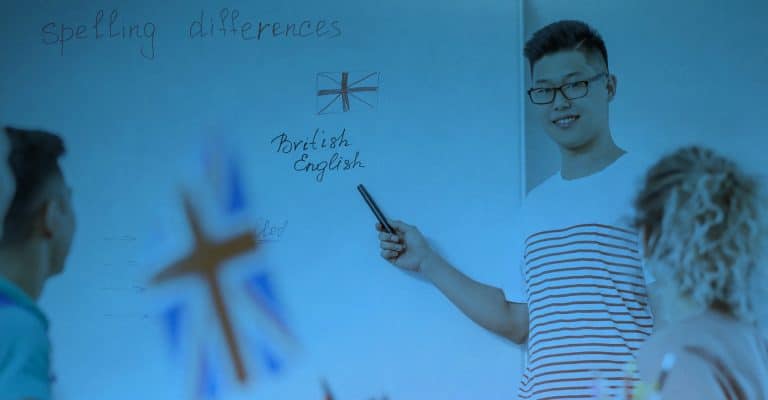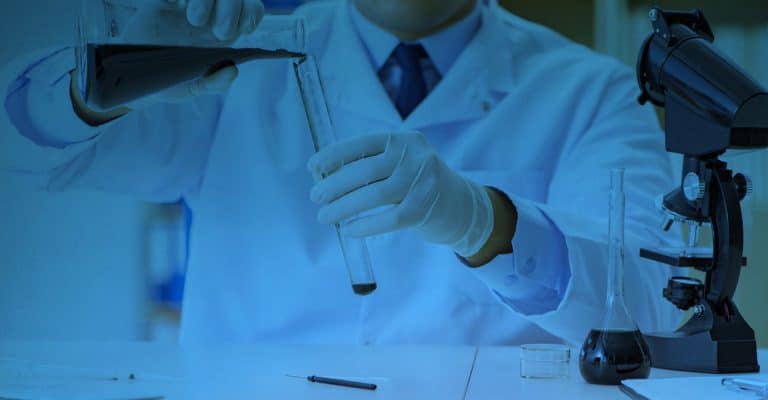

AIU News + Essays + Education + Culture + Science + Technology + Art + Design + Body + Mind + Environment + Human Rights + Animal Rights + Project Management + About AIU
Article published

OCTOBER 25, 2022. One of our Academic Advisors, Dr. Mohammad Shahidul Islam, published his article on the European Journal of Applied Sciences, 10(4). 556-569 in August 2022. The second part of his article is about: AIU Online Based Distance Learning Education System to Achieve UNESCO 2030 Goals Towards Sustainable Development based on student reflection. You can find his article on the link below: “Sustainable Treatment of Emerging Organic Pollutants (Eops), Endocrine Disruption Chemicals (Edcs) from Water &WasteWater and Role of AIU Online Based Distance Learning Education System to Achieve UNESCO 2030 Goals Towards Sustainable Development”: https://drive.google. com/file/d/1xluPvQvmwVEzg4gefCi4K DHi7RIzwQje/view
Summit participation

NOVEMBER 4, 2022. One of our graduates with a major in Business Administration & Finance, Kanbiro Orkaido Deyganto, was invited to attend the “8th Global Entrepreneurship & Business Management Summit” held during March 27 – 28,2023 at Amsterdam, Netherlands, by the Entrepreneurship Summit 2023 committee. Kanbiro Orkaido Deyganto’s abstract titled “Factors Affecting Attitudes of Youth towards Entrepreneurship in Ethiopia” was approved by the scientific committee so that he can share his knowledge and views in respective to the theme “Innovation and Latest Trends of Business Opportunities”. The main scope and importance of the Conference are to bring all the wings of the business and entrepreneurship under one roof and share their experiences, pros, and cons with us. Discussion of the innovative and recent trends in the business field will be the main criteria of the conference. For more details and information, please visit the following link: https://entrepreneurship. global-summit.com/
21 TH INTERNATIONAL CONFERENCE ON Publishing Studies Information, Medium & Society

Call for Papers This Conference will be held 30 June 2023 at Sorbonne Université, Paris, France. We invite proposals for paper presentations, workshops/ interactive sessions, posters/ exhibits, colloquia, focused discussions, innovation showcases, virtual posters, or virtual lightning talks. 2023 Special Focus: “Social Narrative Makers: Storytellers, Researchers, Publishers, Platforms” Plenary Speaker Dr. Phillip Kalantzis Cope Chief Social Scientist, Common Ground Research Networks, USA. Social Events • Live Online Tour: Visit the Louvre with an Art Historian • Narratives of Paris Walking Tour: Sainte Chapelle and Ile de La Cite • Boat Dinner Cruise: The Essence of Paris Early proposal deadline November 30, 2022 Early registration deadline December 30, 2022 Visit the website: https://informationmediumsociety. com
Graduated with Distinction
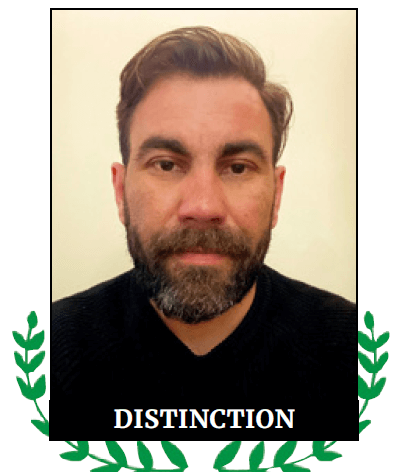
Nilsson Carlos Muñoz Padilla
Doctor of Business Administration
Business Administration

Bachelor of Science
Electromechanical Engineering
Angola
Julienne Uwera
Bachelor of Social and Human Studies
Health Care Administration
Canada
Franklin Arturo Fernández Jímenez
Doctor of Economics
Finance and Economics
Dominican Republic
Jorge Luis Hermosa Intriago
Bachelor of Systems Engineering
Systems Engineering
Ecuador
Mery Del Carmen Burgos Ramos
Doctor of Science
Nutrition
Guatemala
Tricia Vivia Morris
Doctor of Philosop hy
Mathematics Education
Jamaica
Joseph Anand
Doctor of Science
Psychology
Malaysia
Mobolaji Oluwaseye Olanrewaju
Doctor of Business Administration
Business Administration
Nigeria
Michael Akintayo Adaralewa
Doctor of Public Administration
Public Administration
Nigeria
Lourdes Jacqueline Mojica
Doctor of Business Administration
Business Administration
Panama
Mohammed Yahyaa Almathami
Bachelor of Legal Studies
Legal Studies
Saudi Arab ia
Priyantha Theja Gunawardena
Doctor of Philosop hy
Nutrition Science
Sri Lanka
Mohamad Ayach
Doctor of Philosop hy
Sustainable Parametricism Architecture
United Kingdom
Martha Onyiego Wamukoya
Doctor of Philosop hy
Project Management
US A
María Soledad Cobian
Doctor of Marketing
Marketing
Argentina
Deuzoumbe Daniel Passalet
Doctor of Legal Studies
International Legal Studies
Chad
Elías Yamil Bortokán Bortokán
Doctor of Education
Education
Dominican Republic
Lungile Baphetsile Ngcamphalala
Doctor of Education
Education
Eswatini
Paul Andrew Williams
Doctor of Science
International Relations
Guyana
Hussein Salesa Uran
Bachelor of Communications
Communications
Kenya
Zoumana Coulibaly
Doctor of Business Administration
Business Administration
Mali
Ekwere Solomon David
Doctor of Education
Education
Nigeria
Khalid Yusuf Ahmed
Doctor of Philosop hy
Accounting
Nigeria
Abdiel J. De Gracia Bonilla
Bachelor of Science
Industrial Engineering
Panama
Bamie Lionel Lebbie
Bachelor of Accounting
Accounting
Sierra Leone
Cynthia Castiglioni-Barreto
Doctor of Philosop hy
Social Communications and Sociology
Switzerland
Milaine Catherine Gradel
Doctor of Health Science
Mental Health
United Kingdom
Anu Resmi Joseph
Doctor of Philosop hy
Project Management
US A
Bachelor of Public Health
Public Health and Nutrition
Bahamas
Nilsson Carlos Muñoz Padilla
Doctor of Business Administration
Business Administration
Chile
Omar Franklin Placido Lara
Bachelor of Science
Architecture
Dominican Republic
Abatneh Mnuye Enyew
Master of Management
Project Management
Ethiop ia
Kennyaldie Senat
Bachelor of Science
Science
Haiti
Apollo Nyang’ayo Oluoch
Doctor of Conflict Management
Conflict and Peace keeping
Kenya
Miriam Amine Antoun Helue
Bachelor of Tourism
Holistic Evolutionary Tourism
Mexico
Samuel Sunday Mkpokporo
Master of Science
Subsea Engineering
Nigeria
Oluwatoyin Olatunbosun-Ajala
Master of Management
Facility Management
Nigeria
Leonarda Ayarza Romero
Doctor of Arts
Arts and Humanities
Peru
Maxine Teo
Master of Science
Communications
Singapo re
Shari Sheena LeQuay
Master of Education
Education
Trinidad and Toba go
Tinubu Muhammad S. A
Bachelor of Business Administration
Business Administration
US A
Kazadi Musempe Caleb
Master of Science
Mining Engineering
US A
Nelson Josepth Batallas Avila
Bachelor of Science
Electrical Engineering
Belgium
Daniel Alejandro Fuentes Alvarez
Bachelor of Science
Metallurgical Engineering
Chile
Santa Cabrera Perdomo de Montas
Doctor of Philosop hy
Education Science
Dominican Republic
Goa Kussa Dana
Doctor of Philosop hy
Conflict Resolution And Peace Building
Ethiop ia
Xiomara Clarivel Paguada
Bachelor of Arts
Design and Interior Decoration
Honduras
Alain Ilunga Ngoy
Doctor of Philosop hy
Human Resources Management
Kinshasa
Miguel Pérez Martínez
Doctor of Marketing
Marketing
Mexico
Sylvanus Ogbor
Doctor of Management
Leadership and Change Management
Nigeria
Olatona Temitope Olaniyi
Doctor of Economics
Petroleum Economics
Nigeria
Brenda J. Hernández-Rivera
Doctor of Public Health
Epidemiology
Puerto Rico
Maxine Teo
Doctor of Philosop hy
Psychology
Singapo r
Yalçin Tosun
Bachelor of Science
Civil Engineering
Türkiye
Thelma Eugenia Guevara Delgado
Master of Business Economics
Business Administration
US A
Eunice Dube
Doctor of Science
Health Sciences and Public Health
US A
Find More Graduates

Testimonials
FIND MORE TESTIMONIALS FROM A I U STUDENTS HERE: https://wp24.aiu.edu/Testimonials.aspx

Sulayman Darboe
Bachelor of Psychology
August 4, 2022
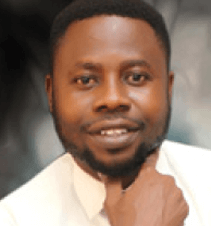
Femi Owolabi
Bachelor of Business Administration
August 9, 2022
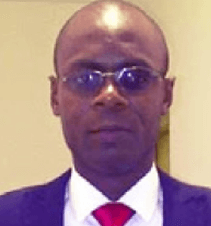
Nathan Kashimu Changwe
Bachelor of Business Administration -
August 16, 2022
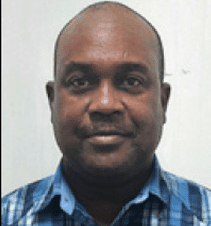
Michael Tracey
Bachelor of Logistics and Supply Chain Management
August 18, 2022
Building the necessary pathway
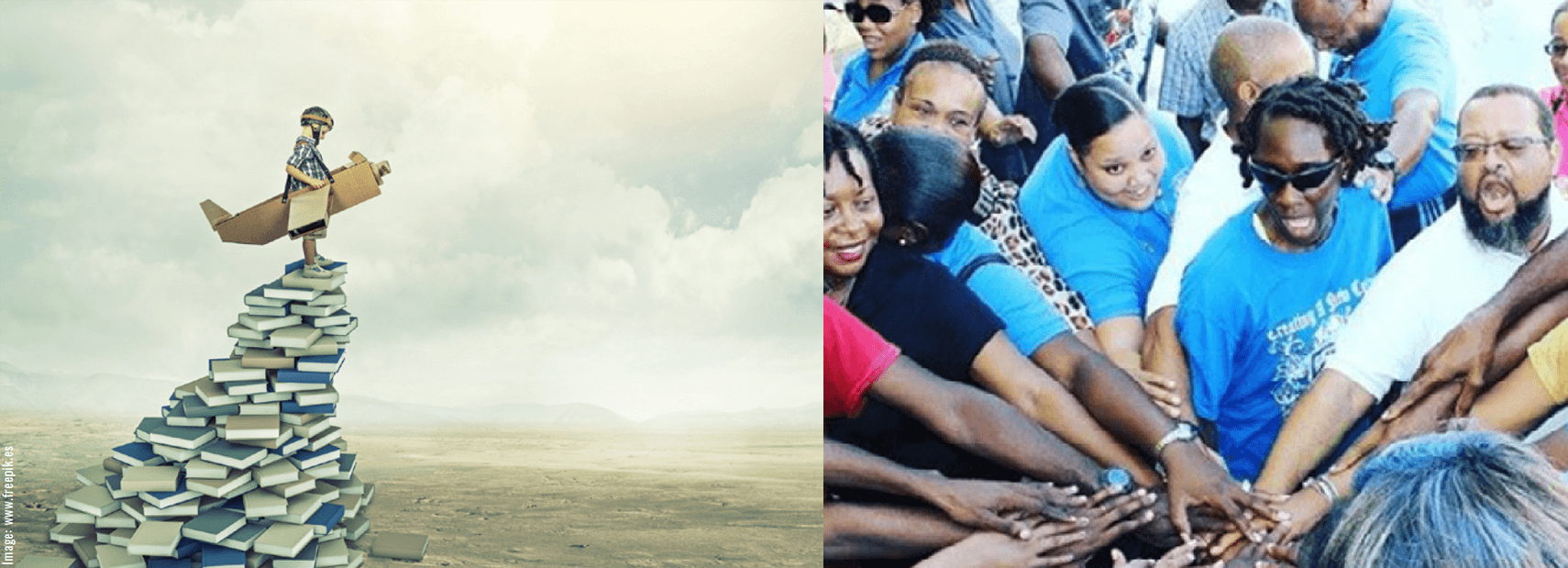
We are living in a world where we ask ourselves: Why so many conflicts? Why don’t the problems end? What do we have to do? Where is the coexistence? If we live in the world we describe below: Why doesn’t the solution appear? There are items on the market that we couldn’t imagine, trade becomes global and in a matter of minutes, you travel everywhere, we know what is happening anywhere instantly, every day there is talk and talk of more money but peace, coexistence, harmony between people and peoples are further away every day. What happens to us as human beings that coexistence is not possible? What happens to us as human beings that rights are not for everyone? What happens to us as human beings that we can’t take care of the planet that gives us life? The answer is very simple. We need education. The United Nations Educational, Scientific and Cultural Organization (UNESCO) in the analysis presented at the September 2022 Summit in New York, whose document was the product of the work of the International Commission on the Futures of Education, created by the Organization in 2019; tells us: “We are faced with an existential choice: continue down an unsustainable path or radically change course. To continue on the current path is to accept unconscionable inequalities and exploitation, a spiral of multiple forms of violence, the erosion of social cohesion and human freedoms, continued environmental destruction and a dangerous and perhaps catastrophic loss of biodiversity”. UNESCO. 2022. Internation al Commission on the Future of Educ ation . Rei magine ou r fu tures together, a ne w soci al con tract fo r educ ation . p. 7 https://unesdoc.unesco.org/ark:/48223/ pf0000381560
This social contract has to be worked on so that we can have life and the rights that every human being should enjoy. We are living the war of money and the war of power. The owners of world wealth want more money and the owners of power, the politicians, want the power to get money; it is not to solve the needs of its governed. Politicians use those who will be their governed to achieve power, but when they achieve it they forget about them and let’s see how we make them pay more taxes and get more benefits. From the above it follows that the education and services they organize will be far from quality; it’s always to stay in power. UNESCO has been holding Summits where governments and individuals are invited to meetings to discuss and find solutions to the social contract that must exist so that life is possible for all. The last Summit was held in parallel to the 77th General Assembly of The United Nations (UN) since UNESCO is an area of the UN. The Summit on Education was held October 16 – 26, 2022. The Commission, whose work was done in 2 years, tells us: “This new social contract must be based on human rights and the principles of non-discrimination: social justice, respect for life, human dignity and cultural diversity”.
UNESCO. 2022. Internation al Commission on the Futures of Educ ation . Rei magine ou r fu tures together, a ne w soci al con tract fo r educ ation . P.III https://unesdoc. unesco.org/ark:/48223/pf0000381560 It’s a job to which UNESCO invites all those who have power in society: governments, businessmen and society in general to work for the above objective. Life on the planet is not possible under the conditions in which we are living. We see the decomposition of democracies by having holes in their legislation through which those who want democracy, but to use those spaces to do barbarity and media for their benefit, filter. Democracies have legislative spaces that haven’t been worked on in accordance with the advancement of technology and lies are spread by many mass media with the purpose of these groups to obtain all the benefits that are possible for them.
It’s also happening that authoritarian governments enjoy the problems of democracies because in this way they justify the way they treat their governed without any rights. It’s urgent to establish relations of coexistence of human beings among themselves and with the planet. When education is limited, we have the results we are experiencing: with Covid-19, 1.6 billion students around the world were affected by closing schools or not having virtual communication. We only have this planet to live on and it seems, from the behavior of human beings, that this is not the case. The social contract must be for the proper treatment of our only space for life, just as there must be fundamental rights to establish, such as the equality of human beings, regardless of gender. There must be a right to quality education for all at the same time as access to virtual education. “The steps we take (or don’t take) to reduce carbon emissions will determine what happens in the 2030s and 2040s, and will have knock-on effects for hundreds of thousands, or even millions, of years. The scale and speed of the changes we are making to Earth are without historical precedent and very little geological precedent”. UNESCO. 2022. Internation al Commis – sion on the Future of Educ ation .
Rei magine ou r fu tures together, a ne w soci al con tract fo r educ ation . P.30. https://unesdoc.unesco.org/ ark:/48223/pf0000381560 That’s how important the changes we must make are and we are as if nothing happened. The majority does what they want and authoritarianism and populist governments are growing. We are totally unaware: every type of nondemocratic government uses education to stay in power. Science is one, but concepts enter it in the social areas that suit those interests and hide the veracity of the facts. Something very important that UNESCO recommends and recommends is: adult education thus education for all the life. Also develop virtual education. “Adult learning and education perform multiple functions. It helps people to find their way through a series of problems, it increases competencies and a sense of common action, it allows people to take more responsibility for their future, and it also helps adults to understand and criticize paradigms changing and the power relations and take steps towards the formation of a just and sustainable world”. UNESCO. 2022. Internation al Commis – sion on the Future of Educ ation . Rei magine ou r fu tures together, a ne w soci al con tract fo r educ ation . P.121 https://unesdoc.unesco.org/ ark:/48223/pf0000381560 According to UNESCO, adult education is very important because of their lived experiences, a valuable contribution for young people who are starting out in the world of production.
You are at a university, Atlantic International University, (AIU), which offers you an open Curriculum, where you can choose the topics you want and get out of the programming that many governments do to stay in power. Take advantage of the benefit and invite others to enjoy this privilege. We are living in a world where the useful life of products is short in order to generate greater demand and the crazy market of products and products, beyond what is necessary; bring our planet in the conditions in which we are living: there is no respect for renewable and non-renewable resources. 1. Will humanity still forget that there are renewable and nonrenewable resources on our planet? 2. Will we continue without caring about global warming? 3. Will we continue without caring what we have to learn for a lifetime? 4. Will we continue without seeing the others? 5. Will we still be blind in the society of violence? The answers will offer us the world we want. It depends on us.
BIBLIOGRAPHY. Organización de la Naciones Unidas para la Educación, la Ciencia y la Cultura UNESCO. 2022. Comisión Internacional sobre los futuros de la Educación. Reimaginar juntos nuestros futuros, un nuevo contrato social para la educación. Retrieved from: https://unesdoc.unesco.org/ark:/48223/pf0000381560
Technology for a sustainable development
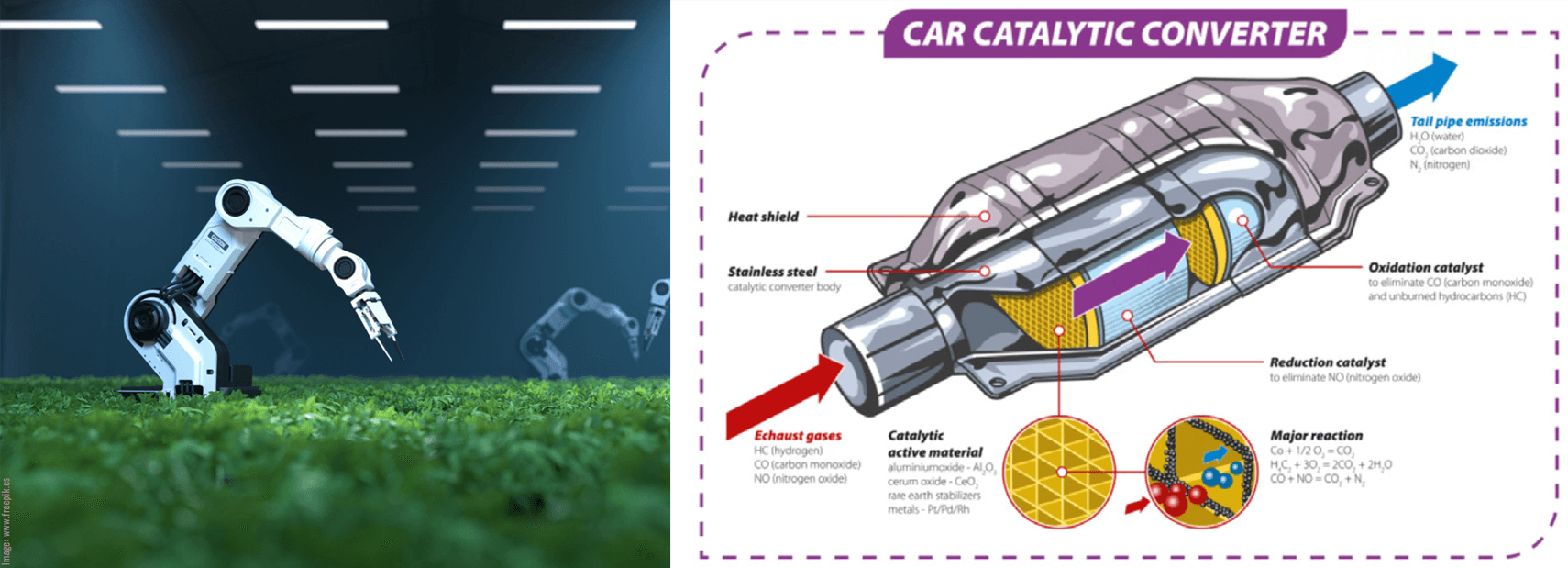
In a world where the race for economic and technological development of countries and nations is driving the policy choices of decision makers at all levels, research shows that, roughly speaking, since the industrial revolution, a little more than 80 per cent of the growth in per capita income in industrialized countries has been the result of a number of factors, including technology, education, research and leadership. There are, however, various economic theories of the growth of nations, which, even if they do not answer all the questions concerning growth, at least shed some light on the subject.
Technological, organizational, managerial and structural innovation are important variables in the evolution of the production of goods and services, which is the key to economic development. In order to leave nothing to chance in terms of economic and technological development, humanity has understood not only that there is no such thing as fixed development, but that it is a process that is continuous and permanent, in short, it is a dynamic process. The future of humanity therefore depends on this process, which has been called sustainable development.
Therefore, the word “development” alone no longer has the same consonance or the same meaning. For this word to find its meaning, it is now imperative to accompany it with the word “sustainable”. Thus, there is no development if it is not sustainable. So what is sustainable development? What is the relationship between technology and sustainable development? What are the levers on which development can rely to be sustainable? These questions and many others are those that will soon be on the minds of decision makers, researchers in the field of science and technology, and even leaders at all levels of society. According to (Bruntland, 1987) sustainable development is the idea that human societies should live and meet their needs without compromising the ability of future generations to meet their own needs. In concrete terms, sustainable development is a way of organizing society in such a way as to enable it to exist in the long term. This implies taking into account both present and future imperatives, such as the preservation of the environment and natural resources or social and economic equity. This definition does not show the influence of technology in the process, but it is of such crucial importance that nowadays, it is necessary to bring it closer to understand the relations that have been woven over time between the followers of technology and the initiators of sustainable development. The principle of sustainable development was born from the “techno-pessimistic” currents of thought. The tone of the discussion was set in an authoritative manner by the Club of Rome and the Meadows Report (Stop Growth) of 1972, which opposed ecological and economic imperatives and supported the thesis of an inevitable decline. This “techno-pessimistic” current supports the idea that the finiteness of natural resources implies a degrowth and a climate change, accompanying in its wake the degradation of biodiversity and the exhaustion of natural resources. However, the concept of sustainable development proposes a contradictory “techno-optimistic” response to the ecological crisis. In 1987, the Brundtland Report, entitled “Our Common Future”, commissioned by the UN for the Earth Summit, defined sustainable development as “a mode of development that meets the needs of the present without compromising the ability of future generations to meet their own needs”.
This vision, widely accepted today, confirms the institutionalization by the international community of the consideration of environmental concerns. It explicitly highlights the role of technical progress and new technologies in leading humanity towards sustainable development. In this logic, the massive development of new technologies would be able to meet the needs of present and future generations. The dissemination of the concept of sustainable development therefore promotes the development of new technologies favorable to the environment. It is the one that challenges us today as human beings driven by a desire for technological development. It leads us to put technology at the service not only of the environment, but also of the economy and of the rational and intelligent management of our resources, which in reality are not infinite. This principle can be observed today in a number of fields, among others: 1. In the field of energy production We can notice today with a lot of satisfaction that new technologies of energy production gain more and more ground. We can thus quote, Solar Energy, Hydraulic Energy, Wind Turbines. In a much more notorious way, researches are in progress in the field of Marine Energy (Wave Energy, Tidal Energy). This is how they are classified in the so-called green energy sources. 2. In the automotive field Since 1993, a European standard has been established concerning the regulation of polluting emissions from vehicles. Since this date, each car that manufacturers put on the road must meet these obligations, and it is therefore since this period that catalytic converters are mandatory on gasoline vehicles. The introduction of this requirement is a European directive regulating vehicle emissions and is a technical response to a political and environmental problem that had already led to the adoption of draconian standards in the United States, particularly in the State of California (Clean Air Act of 1972). The decision to make it compulsory, as of January 1993, especially on gasoline engines of new vehicles, which produce gaseous pollutants such as carbon monoxide (CO), nitrogen oxide (NOx) and hydrocarbons (HC), requires the installation of a catalytic converter (or catalyst) aimed at eliminating, selecting or reprocessing harmful emissions from the exhaust gases. These catalysts (the first of which were developed in 1974 by the American company General Motors) cause a triple action, hence their name of three-way catalysts: transformation of CO into CO2, NOx into N2 (nitrogen) and CO2, and unburned hydrocarbons into CO2 and H2O (water). In 1997, the catalytic converter became mandatory on diesel engines.
From day to day in several countries within the European Union, this regulation is getting tougher. It is in favor of this hardening that in case of technical control, the rate of CO-CO2 must obligatorily be less or equal to an index of 0,5 otherwise it is the refusal. Moreover, in case of control by the forces of order, if you do not respect the standards, the fine can amount to 7,500 €. In the same framework, since July 1, 2019 in France and, according to (https://www.legifrance.gouv. fr/jorf/id/JORFTEXT000037838927) the anti-pollution test carried out during the technical control is reinforced on vehicles running on diesel. During this control, the amount of particles emitted by the exhaust is compared to that indicated by the manufacturer. If the homologation values are exceeded, the vehicle is subject to a second inspection within two months. To crown this rigor, Article L. 318-3 of the Highway Code states that “the fact of carrying out transformations on a vehicle which have the effect of removing a pollution control device or degrading its performance” is punishable by a fine of 7,500 €. With these laws that are constantly getting tougher, and with the commitment of politicians in the environmental field, technology has once again come to the rescue of mankind, especially with the electric car, which produces no CO2, no NOx, no HC. With it, we just need to be reassured that the batteries are sufficiently charged, and then, the rest is history.
3. Composite materials make their entry into the field of aviation In the field of aeronautics, the majority use of carbon fiber to the detriment of traditional metal alloys, has for some time made a remarkable entry into the field of aviation, at least civil. Composite materials have become the Achilles’ heel of new generation aircraft such as the Boeing B787, also known as the Dreamliner, which incorporates 50% composite materials, compared to only 12% for its predecessor (Boeing B777). The Dreamliner’s construction process is completely new: this plane is built from composites (plastic-reinforced carbon fiber), rather than aluminum. This means that it is stronger, lighter and faster to build (in theory). Carbon fiber allows us to use 1,500 fewer sheets of aluminum on a fuselage section, to reduce the number of rivets by 80%, and to limit the number of holes drilled in the fuselage to 10,000, compared to one million for the B747. The composite should also allow a 30% saving in maintenance costs, by eliminating the problems of oxidation. It requires 3,000 hours of work for complete maintenance, whereas the B777 required 40,000 hours. Its CO2 production is reduced by 35%, and the noise produced is reduced by almost 40%. We can see that the advantages of carbon fiber are numerous for both airlines and nature.
4. In the computer field Consumerism in the electronic and computer field is at the same time the origin and the support of the current technological boom. However, if we look closely, we could clearly agree with the “techno-pessimists”. And for good reason, a few factual elements such as, for example, the latest Apple IPhone X which will generate nearly 79 kg of CO2 during its life, or these 45 million tons of electronic waste per year, of which only 20% are recycled. This shows the impact of our cell phones, computers, printers and other electronic gadgets on the environment. According to ADEME, the manufacture of a single computer requires 436 kg of fossil fuel, 1.8 tons of materials, 22 kg of chemicals and 1500 liters of water. Moreover, computers are full of toxic substances (dioxins, cadmium, lead) which we do not know what to do with at the end of their life cycle. At this level, the composite is still invited to the discussion, and for several years now, the manufacturers of peripherals have integrated the use of composite materials in their manufacturing process. The Web also has an impact on the environment which is estimated, per person and over a year, at more than 200kg of greenhouse gas emissions. It also uses a very important water resource, nearly 3000 liters of water per year. (The manufacture of equipment, the production of electricity and the cooling of data centers all require water). In short, all the actions that can be carried out via the Internet have a certain impact on the environment. Still according to ADEME, sending an email would emit up to 19 grams of CO2. To rub salt in the wound, the Agency points out that the manufacture of computer equipment is among the main sources of environmental impact with 29% of energy consumption, 54% of greenhouse gas emissions, 61% of water use and 97% of resource depletion. The users’ work environment (computers, screens, external peripherals) and IT services (premises, means of transport and equipment for the people in charge of running the information system) account for between 44% and 66% of the impacts. And contrary to popular belief, the energy consumption of data centers is not the main source of impact. Greenpeace goes even further by declaring: “The pollution generated by the Internet is such that if the Internet were a country, it would be the 6th largest consumer of energy in the world”. End of quote. Faced with all this accusation, the adoption of the cloud, although it would not solve everything, would solve a good part of these problems of resource depletion and ecological risks. This would be achieved through strict regulation of data center creation. If, for example, rules are put in place encouraging several companies to build their common data centers, thus avoiding that each company has its own data center.
REFERENCES. Bauer, E. (2016). Lean Computing for the Cloud (1st ed.). Wiley. Retrieved from https://www.perlego.com/book/993265/lean-computing-for-the-cloud-pdf (Original work published 2016) • How broadband infrastructure impacts greenhouse gas emissions: A chile case study. World Bank Blogs. (n.d.). Retrieved November 7, 2022, from https://blogs.worldbank.org/digital-development/howbroadband- infrastructure-impacts-greenhouse-gas-emissions-chile-case-study • Insights. Climate Impact Partners. (n.d.). Retrieved November 7, 2022, from https://www.climateimpact. com/news-insights/insights/infographic-carbon-footprint-internet/ • Influence of Ultrasonic Assistance on Delamination During Machining of Different Composite Materials • DOI: 10.2507/28th.daaam.proceedings.055 (2018). (doc) (p. 5). https:// tinyurl.com/mryv42xa accessed October 30, 2022 • https://tinyurl.com/ya29yxh2 accessed 30, October 2022 • https://tinyurl.com/yc446bd8 accessed 18, September 2022 • https://tinyurl. com/2nsfwkuz accessed 18, September 2022 • Credit Image: https://www.appropedia.org/ Composites_in_the_Aircraft_Industry/fr • https://tinyurl.com/57ww5bxs accessed 16, September 2022 • https://tinyurl.com/bpmhvy4z accessed 28, September 2022
Learning
Perseverance
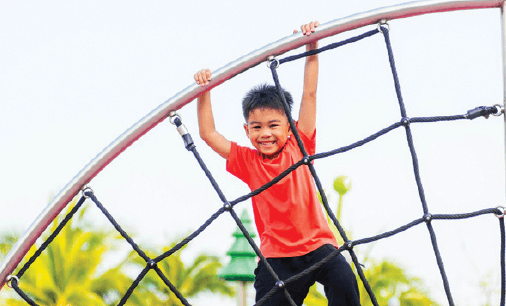
Kids who have perseverance don’t give up in the face of setbacks. They believe their efforts will pay off, so they stay motivated to work hard and finish what they start, despite any barriers that arise. Here are nine ways parents can help kids build perseverance: 1. Fight the factors that discourage kids. Fatigue, anxiety, identity solely based on fast achievements, and learning expectations that don’t match abilities. 2. Teach that mistakes are growth opportunities. 3. “Chunk” tasks. Teaching your kids to divide big tasks into smaller, more manageable chunks will help them feel more confident about completing things over time. 4. Celebrate small wins. The smallest success can encourage a child to keep going. Help them identify their little wins. 5. Stretch their focus. Put a timer on their desk and set it for an appropriate length of time, tailored to their attention span. 6. Correct “stumblers.” Start by acknowledging their frustration and express that it’s a normal feeling. 7. Praise effort. Carol Dweck discovered that when kids are praised for their intelligence (“You’re so smart!”), they are less likely to persevere. 8. Come up with “stick-to-it” statements. Negative self-talk like “I can’t do it” or “I’m not smart enough” derails perseverance. 9. Step back and let them figure it out. … Read full text:
Nomads
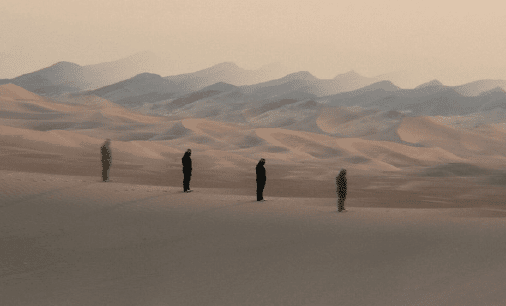
For all the struggles between nomadic and sedentary populations, Anthony Sattin and many scholars point out that there’s more to the story than mutual antagonism. Not only did nomads play an important role historically in spreading goods and ideas, but they offer a similar sense of renewal today, as nations grapple with border conflicts and refugee crises. “Nomads have, as long as we know, represented a threat and a source of wonder to settled populations,” writes Norwegian anthropologist Ada Ingrid Engebrigtsen. … According to human rights scholar Jérémie Gilbert, nomads can be categorized into three types. Pastoral nomads travel with herds of animals like cattle, moving in search of pasture. Nomadic hunter-gatherers travel in search of food sources. Finally, peripatetic service nomads are those who travel between settlements to ply a specific trade. For many nomadic people, the freedom of movement itself is a defining feature of their identity. … Sattin points to one example of nomadic-supported cultural flow in his book, Nomads. Cobalt ore was mined in Persia starting in the tenth centuries, with dried cobalt oxide being used to glaze pottery. Chinese markets imported the “Muhammadan blue” color to draw designs on white porcelain. The Persians copied the Chinese designs and centuries later, they would inspire Dutch potters to create Delft ware, then British artists to make … Read full text:
AIU makes a huge contribution to the world by giving new scient ifics the space for original investigations and research. Visit MyAIU Evolution
Covid patients

In March 2020, New York City’s hospitals filled up with patients desperately ill with Covid-19. In many cases, when their fluid-filled lungs could no longer give them oxygen, doctors sedated them and put them on ventilators. The patients who recovered were taken off the machines and anesthesia. Within a day or so, their doctors expected them to wake up. But that’s when the phone of Dr. Nicholas Schiff, a neurologist at Weill Cornell Medicine, started lighting up. “We’re starting to get all these weird consults,” Dr. Schiff recalled. “People have been liberated from anesthesia after surviving Covid, and they’re not waking up.” … Dr. Schiff and his colleagues have been trying to make sense of this strange phenomenon ever since. He just published a paper that proposes an answer, which involves turtles. The brains of unconscious Covid patients bear a striking resemblance to those of turtles that spend the winter encased in ice, argued Dr. Schiff and Dr. Emery Brown, a computational neuroscientist at M.I.T. The turtles survive by putting their neurons into an unusual quiet state that lasts for months. They believe that the combination of Covid and sedatives prompts a similar response in people. If the theory holds up, it might point to new ways to save people from brain damage: by intentionally putting people into this state, rather than doing so by accident. … Read full text:
Read full text:
Spatial Biology
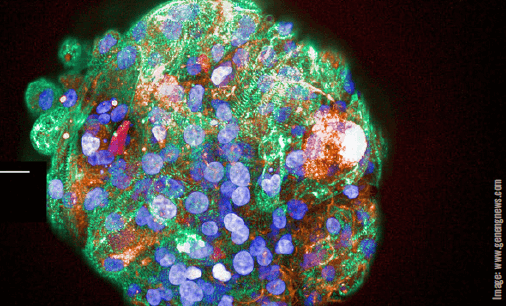
The conventional tools used by biologists to study the transcriptomes of different cell types were originally limited to immunohistochemistry or in situ hybridization —i.e., labeling RNA, DNA or proteins using one or two different colors— making it possible to distinguish between one or two types of cell. With the advent of powerful single-cell RNA sequencing (scRNAseq) technology, biologists were soon investigating every cell within a tissue in unprecedented detail. Now, by combining these single-cell analysis tools with imaging and microfluidics, spatial biology is adding a new layer of information and is set to transform biomedical science. Spatial biology uses any technology that detects the location and biological quantity of cellular contents. This could include the transcriptome, the epigenome or anything you can measure with fluorescent in situ hybridization (FISH) technologies or next-generation sequencing (NGS), but for it to be spatial biology, the location has to be involved. About five years ago, spatial transcriptomics technologies began to be developed that make it possible to look into each and every cell type in detail. This provided context about where these cells are sitting in the tissue — how close they are, how this proximity changes during disease progression and how their interactions change when treatments work, versus when they fail. … Read full text
Get a better knowledge about our rights and the way we can use them on a daily basis to prevent any abuse or limitations of them. Visit MyAIU Human Rights.
Kiliii Yüyan
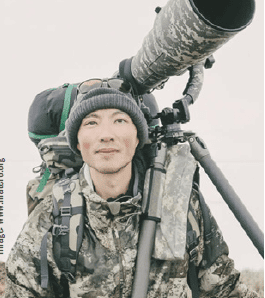
Kiliii Yüyan is an award-winning photographer whose work has taken us to some of the world’s harshest environments, contributed to the discussion around stewardship, uplifted Indigenous perspectives, and illuminated the importance of human connection to the land and sea. To recognize this incredible portfolio of work, Kiliii Yüyan has received the National Geographic Society’s 2023 Eliza Scidmore Award for Outstanding Storytelling. This award — named for the writer and photographer Eliza Scidmore, the first woman elected to the Society’s Board of Trustees in 1892— recognizes individuals who use immersive storytelling to make complex ideas, issues, and information relevant and accessible. Raised by parents who sought refuge in the U.S., and informed by his ancestry that is both Nanai/Hèzhé (East Asian Indigenous) and Chinese-American, Yüyan’s work explores the human relationship to the natural world from different cultural perspectives. He said: “Trying to understand my ancestry led me on a lifelong dive into Indigenous perspectives and ultimately guided me into storytelling.” Whether he’s camping on arctic sea ice with polar bears, sharing a meal of piranhas with the Cofan in the Amazon rainforest, or participating in cultural burns with the Yurok community in California, one thing is sure: Yüyan demonstrates what it takes to create a truly immersive storytelling experience. … Read full text:
First Blizzard, Standing Rock

Stoic horses weather the first snowfall of North Dakota’s coming winter. Local law enforcement had been expecting the cold weather to scatter the thousands gathered at Standing Rock. Don Cuny retorts, “They will leave long before we do —this is our land and winter is in our blood.” And it was true. I made several trips to Standing Rock, and each time there were more people gathered in solidarity. Read full text
Precision hip system
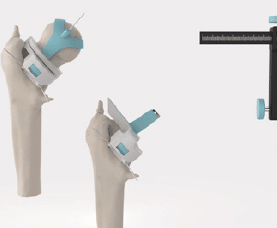
Student: Thomas James Brew Course: MSc Integrated Industrial Design This design presents a positioning system that aids with accurate placement of the femoral implant to significantly reduce leg length discrepancies in patients after undergoing hip replacement surgeries. There is a current lack of instruments and techniques available to surgeons for finding the correct position for the femoral implant during surgery, and as a result, leg length discrepancies are one of the most common complications following a hip replacement. To prevent these discrepancies, the Precision Hip System uses 3D printed patient-specific surgical guides as well as a leg length calliper for checking measurements throughout the operation.” Read full text: Read full text:
Live a better life learning how to keep your body, mind and soul balanced. Visit regularly MyAIU Body / MyAIU Mind / MyAIU Spirit and MyAIU Energy.
Household mold
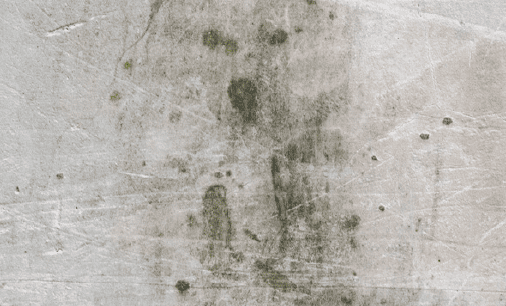
While the potential threat of mold to human health is nothing new, it’s apparent that it could be even more dangerous in the coming years as a result of climate change and growing instability in the world’s energy markets. Mold is a structure that some fungi can grow, often taking on a dark fuzzylike appearance with a musty odor. It thrives in places where there’s a lot of moisture, such as leaky roofs, windows, water pipes, flooded areas, and damp rooms like bathrooms. If the corner of a room has a flurry of dark splodges over it, there’s a good chance this is mold. The problem arises from the spores they emit. To reproduce and disperse, mold pumps out microscopic airborne spores into the surrounding space. For most people, exposure to these spores can lead to symptoms such as stuffy nose, wheezing, and itchy eyes; annoying, but nothing too serious. However, exposure to mold can prove more serious for people with asthma, respiratory conditions, weak immune systems, or specific allergies. Some of the health impacts come from inflammatory responses to mold spores, which the body recognizes as foreign bodies. To make matters worse, some molds also produce mycotoxins that can be harmful or lethal to humans when exposure is high enough. … Read full text:
Anxiety

Children can feel anxious about different things at different ages. Many of these worries are a natural part of growing up. From the age of around 6 months to 3 years it’s very common for young children to have separation anxiety. It’s also common for preschool-age children to develop specific fears or phobias, including animals, insects, storms, heights, water, blood and the dark. These fears usually go away gradually on their own. Many children feel anxious when going to a new school or before exams. Some children feel shy in social situations. If your child does not outgrow common fears and worries, or if it starts interfering with school, home or play, it may mean they need support from a mental health professional. … Here are some common signs and symptoms: Physical: Shortness of breath, headaches or feeling faint • A racing heart and sometimes high blood pressure • Feeling fidgety, trembling or feeling weak in the legs • Feeling sick in your stomach —cramps, diarrhoea or frequent visits to the bathroom • Having trouble sleeping or a reduced appetite; Dry mouth, excessive sweating or feeling hot. Emotional and mental: Struggling to focus on things —lack of concentration • Feeling panicky, nervous or on edge • Feeling overwhelmed or a sense of dread • Feeling out of control in a situation • Feeling tired and grumpy. … Read full text and find out ways to help your child cope: Read full text:
Find Open Courses and a world of learning granted by AIU at courses.aiu.edu Help others study and change their lives. Visit MyAIU Pledge.
Arctic mine expansion
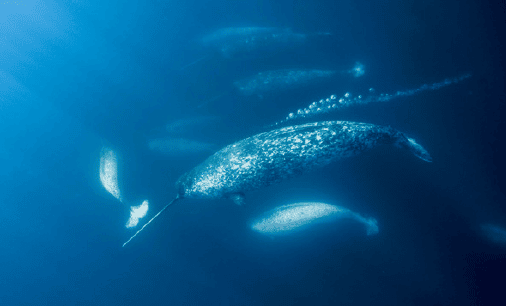
Baffinland Iron Mines’ planned expansion to its Mary River site would have seen it double output to 12m tonnes of iron ore. To bring the ore to market, the mine also said it needed to build a 110km railway to a port near the community of Pond Inlet as well as doubling its shipping. The company —the biggest private-sector employer in Nunavut territory with nearly 2,600 workers— has said the expansion is critical to remaining profitable. Recently, after repeated delays, Canada’s northern affairs minister, Dan Vandal, rejected the company’s application, citing fears from Inuit groups that the expansion could have devastating effects on marine mammals, including key populations of narwhal. The region is home to the densest narwhal population in the world —an important food source for Inuit communities. That decision comes six months after the Nunavut Impact Review Board came out against the expansion. The board held in-person meetings in Pond Inlet, the community closest to the mine, as well as in the territorial capital of Iqaluit. After hearing from community members and the mine, it concluded the project could result in “significant adverse eco-systemic effects on marine mammals and fish, caribou and other terrestrial wildlife, along with vegetation and freshwater” as well as “significant adverse socio-economic effects on Inuit harvesting, culture, land use …
Read full text:
The most toxic place in the USA
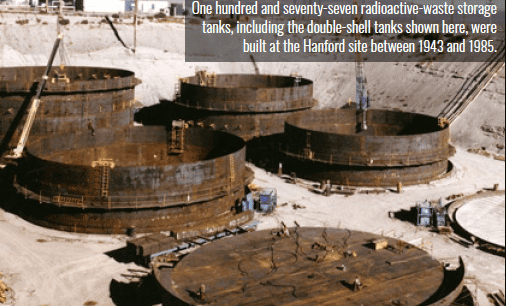
David Feldman: Joshua Frank is an investigative journalist and he is also an author. His latest book is Atomic Days: The Untold Story of the Most Toxic Place in America. … How large is Hanford Reservation and how did it become a federal entity? Joshua Frank: It is a huge land mass that’s in eastern Washington. The location was basically picked because of its remoteness during the Manhattan Project. It’s along the Columbia River. In order to have nuclear power, you have to have access to clean, ample water. So they had a lot of water, and constant electricity because of the dams. But it was also out of sight, out of mind. It was easy to have this big covert operation happening out there. And of course, the Indigenous population and others, typically poor farmers, were easy to remove from the landscape so that they could erect this atomic beast that ended up churning out plutonium for decades. [The Manhattan Project] was a covert military operation. … Hanford was the site that was chosen to produce plutonium, which became the fuel for the bomb that was dropped on Nagasaki, and then, over the course of four more decades, was churning out virtually all of the radioactive fuel for our nuclear arsenal in this country. And now we’re dealing with the aftermath of that. … Ralph Nader: The Hanford Reservation now is soaked with radioactive waste. Some of the gigantic tanks are leaking and they’re perilously close to the Columbia River. … Read full text:
Find support for your own unique art and design projects, or support other creative projects at MyAIU Research
Psychiatric conditions
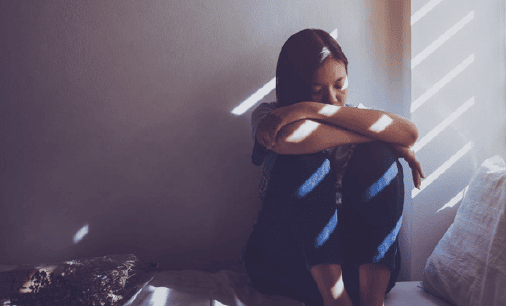
About 32% of autistic women are hospitalized for a psychiatric condition by age 25, a fraction six times higher than for women without autism and nearly twice that of autistic men. “That is quite a shocking number,” says Miriam Martini, a graduate student in medical epidemiology and biostatistics who works in Mark Taylor’s group at the Karolinska Institutet in Solna, Sweden. … A 2021 study, which used a Danish health registry, analyzed data on cooccurring conditions for about 16,000 autistic people up to age 16. The new study appears to be the first national registry-based effort to do the same for women up to age 25, thus capturing a critical time point in young adulthood, when many mental health disorders are first diagnosed. Data for the study came from about 1.3 million people born in Sweden between 1985 and 1997, nearly 21,000 of whom have autism and about 7,100 of whom are women. The researchers pooled together multiple databases to track 11 different psychiatric diagnoses, from anxiety and depression to sleep disorders and self-harm. By age 25, 77% of autistic women and about 62% of autistic men had been diagnosed with a psychiatric condition, according to Martini. Among non-autistic women and men, these values fall to about 14%t and 9%, respectively. … The findings are dire; they suggest a critical need for expanded mental health services, Martini says, especially for women with autism. …
Read full text:
All-terrain wheelchairs
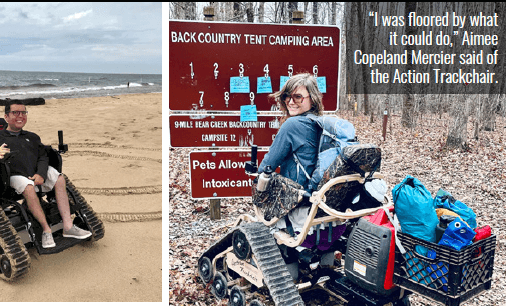
‘El Jefe’
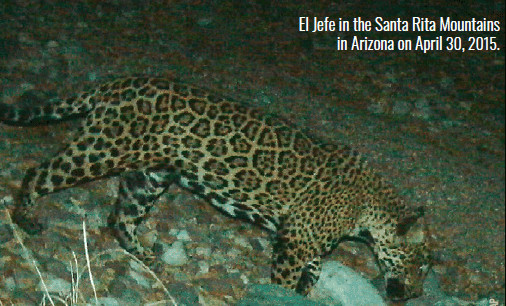
El Jefe —“the boss” in Spanish—, a jaguar last seen in Arizona nearly seven years ago, was spotted in the Mexican state of Sonora last year, researchers confirmed recently, reviving hopes that the species can thwart the border wall that bisects its natural habitat. El Jefe was seen in photos captured in November by a Mexican nonprofit organization, Profauna, which uses more than 150 motion-sensor cameras to track wildlife. With such a large volume of photos, it took researchers until this summer to make the discovery. The researchers cross-checked the images with previous photos of El Jefe using photo-analyzing software and found a 100 percent match, identifying the feline by his unique markings. At first, “I was skeptical,” said Carmina Gutiérrez-González, a research coordinator for the Northern Jaguar Project. “But after making a detailed visual revision, skepticism gave way to surprise and then excitement,” she said in a statement, adding that “there is no doubt this is the same animal photographed in Arizona that many feared could have died when he stopped showing up in trail cameras almost seven years ago.” El Jefe became famous after he was first photographed in 2011 in the mountains near Tucson, one of the few jaguars to be seen on the northern side of the border since the species was “all but extirpated” from the Southwest more than a half-century ago, the Wildlands Network …
Read full text:
Mayan Milpa
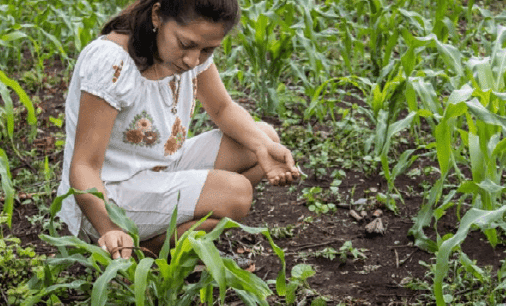
The Mayan milpa received global recognition from the Food and Agriculture Organization of the United Nations (FAO) for the complexity of this model, which includes the combined cultivation of beans, squash and, mainly, corn, the basis of the regional diet since ancestral times. The designation is the result of the work of the producers, which has transcended for more than 3,000 years as an integral part of the identity of the area; it is characterized by its resilience to climate changes and modernity, long life, and contributions to the conservation of both the culture and biodiversity of the Peninsula. … The milpa is a traditional agroforestry system, formed by a polyculture, which forms a vital spatial dynamics of genetic resources; it is characterized by its knowledge, cultural adaptations, and diverse strategy, based on planting a wide variety of plants (corn, beans, squash, and others) and carrying out multiple economic activities. Since its origin, it has been applied in plots, under the slash and burn technology; it is customary to have years of production and others of rest between harvests, which leads to achieving fertility, reducing the destruction of weeds, and controlling harmful pests. Productive diversity from the community forest is fundamental: vegetable gardens, livestock, handicraft activities, firewood collection, lime and charcoal production, wood for houses, medicinal plants, hunting, beekeeping …
Read full text:
Find Open Courses and a world of learning granted by AIU at courses.aiu.edu Help others study and change their lives. Visit MyAIU Pledge.
Campus
What Is Greenwashing?

What is Greenwashing? Greenwashing is the practice of using media campaigns, PR spin, and distraction to deceive the public into believing an organization’s products, aims, and policies are more environmentally friendly than they actually are. It’s an accusation that can be thrown at anyone and anything pushing any ecofriendly message, but it’s most used to describe the actions of large corporations and governments. It’s thought the term was first coined in an essay written in 1986 by environmentalist Jay Westerveld. He was staying in a hotel that had one of those cards that says something along the lines of “Help save the planet” followed by an explanation of how much water and electricity is used to wash visitors’ laundry. The card went on to say, if you want to save the planet and not wash your towel then leave it on the rack, otherwise dump it on the floor. After a quick stay in the hotel, Westerveld realized that this wasn’t about protecting the environment at all, but saving the corporation money by not washing as many linens. From Governments to fast food giants, greenwashing is everywhere One of the most blatant attempts at greenwashing in recent history was the Volkswagen emissions scandal. Around September 2015, it was revealed that some models of Volkswagen diesel engine cars being sold in the US had been fitted with a hidden “defeat device” that could detect when they were being tested. Its purpose was to pump out fewer emissions when the car was being tested compared to when it was actually being driven on the road. Meanwhile, Volkswagen ran a huge marketing campaign showing off its cars’ low emissions credentials. Very naughty, indeed. This is a pretty clear evasion of the truth, and Volkswagen was eventually caught and punished for the trickery. However, some other corporate greenwashing campaigns are much subtler.
In 2019, McDonald’s launched a big campaign to shift towards paper straws off the back of the growing public awareness of plastic pollution and the problem it poses for marine life. There’s just one problem: the new paper straws were not recyclable, while their old plastic straws were. “While the materials are recyclable, their current thickness makes it difficult for them to be processed by our waste solution providers, who also help us recycle our paper cups,” said a McDonald’s spokesperson at the time. They added that they were looking into a solution for this problem. Accusations of greenwashing are perhaps most common when discussing things like greenhouse gas emissions and pledges to go “net zero.” Some fossil fuel companies —including the biggest in the US, ExxonMobil— have promised to cut their net greenhouse gas emissions to zero by 2050, which is almost as ridiculous as it sounds. A number of these oil and gas companies with net-zero pledges are still planning major new drilling developments that would push the world beyond the targets set out by the 2015 Paris agreement. Their promises often sound great but equate to very little in reality. World powers can also be guilty of greenwashing, namely when it comes to their pledges to “go green.” The majority of the world can be accused of greenwashing to some extent, but one easy target is Saudi Arabia, which has pledged to transition to net zero by 2060. However, they have littleto- no plan for how to actually wean themselves off fossil fuels. The country’s economy and energy demands are still heavily reliant on exporting oil and, likewise, the world relies on their supply. As of July 2022, the country’s publicly owned oil company Saudi Aramco —the world’s largest oil producer— pumped out 12 million barrels per day. COP out? The COP27 climate summit in Egypt kicked off on November 6 2022, and accusations of greenwashing were already kicking around before it started.
Speaking in London in the weeks before COP27, environmental activist Greta Thunberg suggested she was pessimistic about the upcoming climate summit, saying it’s an excuse for “people in power” to exercise “greenwashing, lying, and cheating.” Criticism has also been mounting against COP27 because one of the main sponsors is Coca-Cola, the world’s worst corporate plastic polluter. Not exactly a good look for an event that’s designed to clean up the planet’s environmental problems. The sponsorship has angered activists so much that over 200,000 people have signed a petition that calls for COP27 to ditch the drinks manufacturing giant as their sponsor. “Plastic is suffocating our planet and, year after year, one company leads the pack of polluters —Coca-Cola. Coca-Cola spends millions of dollars greenwashing their brand, making us believe that they are solving the problem. But, behind the scenes, they have a long history of lobbying to delay and derail regulations that would prevent pollution, keeping us addicted to disposable plastic,” the petition reads.
Conversely, COP27 is also looking to crack down on the pervasive problem of greenwashing. The United Nations has just put out a report on the “Net-Zero Commitments of Businesses, Financial Institutions, Cities, and Regions.” In essence, it’s an attempt to improve integrity and transparency in net zero commitments. In the view of the report authors, a country or company shouldn’t just say they’re going net zero, they have to prove it. “The problem is that the criteria and benchmarks for these net-zero commitments have varying levels of rigor and loopholes wide enough to drive a diesel truck through,” UN secretary general, António Guterres, said in a statement. “We must have zero tolerance for net-zero greenwashing,” he added. How exactly this will be achieved is yet to be announced, but it’s clear many people are now striving to reign in this omnipresent problem. Read text by Tom Hale: https://www.iflscience.com/ what-is-greenwashing-and-why-should-it-really-annoy-you-66136
Read full text:
Help others study and change their lives. Visit MyAIU Pledge. Learn how to have a better financial control. Visit MyAIU Money.
Light therapy lamp.

Delivers a strong bright white light at up to 10,000 lux intensity, while filtering out most of UV rays. Can simulate sunlight-like lighting anywhere in your house. Smooth Dimming: 20%-100% brightness stepless adjustment and memory function. www.mysympa.com
Choir doll.

Teenage Engineering, the company known for its powerful electronic synthesizers has just revealed a set of eight uniquely handcrafted wooden dolls made to serenade you with a repertoire of choral classics, as well as perform your own original compositions through midi over BLE [Bluetooth Low Energy]. Watch video: https://youtu.be/_F6yicbG9xw store.moma.org
PureRelief™.

Heating Pad for back & neck with 4 therapeutic heat settings that range from 110-140° F. A built-in LED controller makes adjusting easy to temporarily soothe and reduce muscular back pain and stiffness. Micromink fibers are machine-washable (on delicate cycle). www.amazon.com
2023 calendar.

Kiliii Yüyan is an award-winning photographer whose work has taken us to some of the world’s harshest environments, contributed to the discussion around stewardship, uplifted Indigenous perspectives, and illuminated the importance of human connection to the land and sea. To recognize this incredible portfolio of work, Kiliii Yüyan has received the National Geographic Society’s 2023 Eliza Scidmore Award for Outstanding Storytelling. This award — named for the writer and photographer Eliza Scidmore, the first woman elected to the Society’s Board of Trustees in 1892— recognizes individuals who use immersive storytelling to make complex ideas, issues, and information relevant and accessible. Raised by parents who sought refuge in the U.S., and informed by his ancestry that is both Nanai/Hèzhé (East Asian Indigenous) and Chinese-American, Yüyan’s work explores the human relationship to the natural world from different cultural perspectives. He said: “Trying to understand my ancestry led me on a lifelong dive into Indigenous perspectives and ultimately guided me into storytelling.” Whether he’s camping on arctic sea ice with polar bears, sharing a meal of piranhas with the Cofan in the Amazon rainforest, or participating in cultural burns with the Yurok community in California, one thing is sure: Yüyan demonstrates what it takes to create a truly immersive storytelling experience. … Read full text:
Shirley Anita Chisholm. (1924–2005).
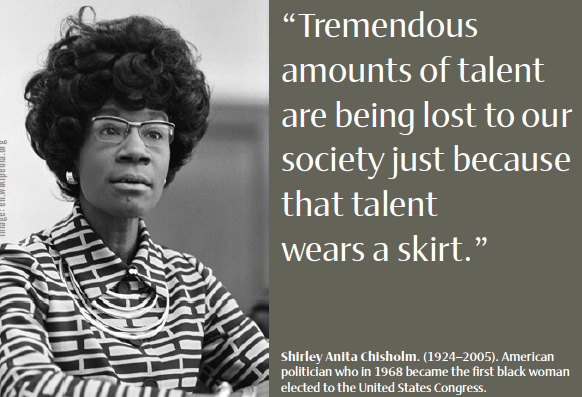
Shirley Anita Chisholm. (1924–2005). American politician who in 1968 became the first black woman elected to the United States Congress.
“Tremendous amounts of talent are being lost to our society just because that talent wears a skirt.”
Say what?
what? “Never follow anyone else’s path. Unless you’re in the woods and you’re lost and you see a path. Then by all means follow that path.” —Ellen DeGeneres
Source: parade.com
BACHELOR’S DEGREE in Business Administration

The Bachelor of Business Administration (BS, BA) program objective is to provide professionals with the right skill set in a range of key business disciplines with specific emphasis on management skills by blending conceptual theoretical framework with practical applications and covering basic discipline material through to more specialized requirements in the management discipline. The Bachelor of Business Administration (BS, BA) program is offered online via distance learning. After evaluating both academic record and life experience, AIU staff working in conjunction with Faculty and Academic Advisors will assist students in setting up a custom-made program, designed on an individual basis. This flexibility to meet student needs is seldom found in other distance learning programs. Our online program does not require all students to take the same subjects/ courses, use the same books, or learning materials. Instead, the online Bachelor of Business Administration (BS, BA) curriculum is designed individually by the student and academic advisor. It specifically addresses strengths and weaknesses with respect to market opportunities in the student’s major and intended field of work. Understanding that industry and geographic factors should influence the content of the curriculum instead of a standardized one-fits-all design is the hallmark of AIU’s unique approach to adult education. This philosophy addresses the dynamic and constantly changing environment of working professionals by helping adult students in reaching their professional and personal goals within the scope of the degree program.
Communication & Investigation (Comprehensive Resume)
Organization Theory (Portfolio)
Experiential Learning (Autobiography)
Academic Evaluation (Questionnaire)
Fundament of Knowledge (Integration Chart)
Fundamental Principles I (Philosophy of Education)
Professional Evaluation (Self Evaluation Matrix)
Development of Graduate Study (Guarantee of an Academic Degree)
Principles of Accounting I
Managerial Accounting
Business Planning
International Business
Organizational Behavior
Business Communication
Ethics in Business
Business Law I
Issues in Leadership
Introduction to Computer Science
Electronic Commerce
Intermediate Macroeconomics
Intermediate Microeconomics
Entrepreneurship
Financial Management I
Introduction to Macroeconomics
Introduction to Microeconomics
aiu.edu/apply-online.html
Pioneer Plaza/900 Fort Street Mall 410
Honolulu, HI 96813
800-993-0066 (Toll Free in US)
808-924-9567 (Internationally)
Bachelor Thesis Project
MBM300 Thesis Proposal
MBM302 Bachelor Thesis (5,000 words)
About Us

Accreditation
Atlantic International University offers distance learning degree programs for adult learners at bachelors, masters, and doctoral level. With self paced program taken online, AIU lifts the obstacles that keep professional adults from completing their educational goals. Programs are available throughout a wide range of majors and areas of study. All of this with a philosophically holistic approach towards education fitting within the balance of your life and acknowledging the key role each individual can play in their community, country, and the world.
Atlantic International University is accredited by the Accreditation Service for International Schools, Colleges and Universities (ASIC). ASIC Accreditation is an internationally renowned quality standard for colleges and universities. Visit ASIC’s Directory of Accredited Colleges and Universities. ASIC is a member of CHEA International Quality Group (CIQG) in the USA, an approved accreditation body by the Ministerial Department of the Home Office in the UK, and is listed in the International Directory of the Council for Higher Education Accreditation (CHEA). The University is based in the United States and was established by corporate charter in 1998.
Our founding principles are based on the United Nations Universal Declaration of Human Rights; per article 26, AIU believes that Higher Education is a Human Right. The University has implemented a paradigm shifting educational model for its academic programs that have allowed it to move closer to this goal through the self-empowerment of its students, decentralization of the learning process, personalized open curriculum design, a sustainable learning model, developing 11 core elements of the Human Condition within MYAIU, and utilizing the quasi-infinite knowledge through the use of information technology combined with our own capacity to find solutions to all types of global issues, dynamic problems, and those of individuals and multidisciplinary teams. Due to these differentiations and the university’s mission, only a reputable accrediting agency with the vision and plasticity to integrate and adapt its processes around AIU’s proven and successful innovative programs could be selected. Unfortunately, the vast majority of accrediting agencies adhere to and follow obsolete processes and requirements that have outlived their usefulness and are in direct conflict with the university’s mission of offering a unique, dynamic, affordable, quality higher education to the nontraditional student (one who must work, study what he really needs for professional advancement, attend family issues, etc.). We believe that adopting outdated requirements and processes would impose increased financial burdens on students while severely limiting their opportunities to earn their degree and advance in all aspects. Thus, in selecting the ASIC as its accrediting agency, AIU ensured that its unique programs would not be transformed into a copy or clone of those offered by the 10,000+ colleges and universities around the world. Since ASIC is an international accrediting agency based outside the United States, we are required by statute HRS446E to place the following disclaimer: ATLANTIC INTERNATIONAL UNIVERSITY IS NOT ACCREDITED BY AN ACCREDITING AGENCY RECOGNIZED BY THE UNITED STATES SECRETARY OF EDUCATION. Note: In the United States and abroad, many licensing authorities require accredited degrees as the basis for eligibility for licensing.

In some cases, accredited colleges may not accept for transfer courses and degrees completed at unaccredited colleges, and some employers may require an accredited degree as a basis for eligibility for employment. Potential students should consider how the above may affect their interests, AIU respects the unique rules and regulations of each country and does not seek to influence the respective authorities. In the event that a prospective student wishes to carry out any government review or process in regards to his university degree, we recommend that the requirements of such are explored in detail with the relevant authorities by the prospective student as the university does not intervene in such processes. AIU students can be found in over 180 countries, they actively participate and volunteer in their communities as part of their academic program and have allocated thousands of service hours to diverse causes and initiatives. AIU programs follow the standards commonly used by colleges and universities in the United States with regards to the following: academic program structure, degree issued, transcript, and other graduation documents. AIU graduation documents can include an apostille and authentication from the US Department of State to facilitate their use internationally.
The AIU Difference
It is acknowledged that the act of learning is endogenous, (from within), rather than exogenous.
This fact is the underlying rationale for “Distance Learning”, in all of the programs offered by AIU. The combination of the underlying principles of student “self instruction”, (with guidance), collaborative development of curriculum unique to each student, and flexibility of time and place of study, provides the ideal learning environment to satisfy individual needs.
AIU is an institution of experiential learning and nontraditional education at a distance. There are no classrooms and attendance is not required.
The AIU Difference
MISSION:
To be a higher learning institution concerned about generating cultural development alternatives likely to be sustained in order to lead to a more efficient administration of the world village and its environment; exerting human and community rights through diversity with the ultimate goal of the satisfaction and evolution of the world.
VISION :
The empowerment of the individual towards the convergence of the world through a sustainable educational design based on andragogy and omniology.
Organizational Structure
Dr. Franklin Valcin
President/Academic Dean
Dr. Ricardo Gonzalez
Chief Operation Officer
and MKT Director
Dr. Miriam Garibaldi
Viceprovost for Research
Dr. Ofelia Miller
Director of AIU
Juan Pablo Moreno
Director of Operations
Paula Viera
Director of
Intelligence Systems
Felipe Gomez
Design Director / IT Supervisor
Daritza Ysla
IT Coordinator
Nadeem Awan
Chief Programming Officer
Dr. Jack Rosenzweig
Dean of Academic Affairs
Dr. Edward Lambert
Academic Director
Dr. Ariadna Romero
Advisor Coordinator
Nadia Gabaldon
Academic Coordinator
Jhanzaib Awan
Senior Programmer
Leonardo Salas
Human Resource Manager
Benjamin Joseph
IT and Technology Support
Rosie Perez
Finance Coordinator
Chris Soto
Admissions Counselor
Dr. José Mercado
Chief Executive Officer
Chairman of the Board of Trustees
Linda Collazo
Logistics Coordinator
Irina Ivashuk
Alumni Association
Coordinator
Clara Margalef
Director of Special Projects
of AIU
David Jung
Corporate/Legal Counsel
Bruce Kim
Advisor/Consultant
Thomas Kim
Corporate/
Accounting Counsel
Camila Correa
Quality Assurance Coordinator
Maricela Esparza
Administrative Coordinator
Chris Benjamin
IT and Hosting Support
Mayra Bolivar
Accounting Coordinator
Roberto Aldrett
Communications Coordinator
Giovanni Castillo
IT Support
Jaime Rotlewicz
Dean of Admissions
Dr. Mario Rios
Academic Advisor
Michael Phillips
Registrar’s Office
Rene Cordon
Admissions Support
Jenis Garcia
Admissions Counselor
Ricardo González, PhD
Provost
Dr. Silvia Restorff
Academic Advisor
Dr. Prakash Menon
Academic Advisor
Carlos Aponte
Telecommunications
Coordinator
Dr. Nilani Ljunggren De Silva
Academic Advisor
Dr. Scott Wilson
Academic Advisor
Dr. Mohammad Shaidul Islam
Academic Advisor
Dr. Edgar Colon
Academic Advisor
Deborah Rodriguez
Academic Tutor Coordinator
Cyndy Dominguez
Academic Tutor Coordinator
Kinmberly Diaz
Admissions Support Tutor
Amalia Aldrett
Admissions Coordinator
Sandra Garcia
Admissions Coordinator
Jose Neuhaus
Admissions Support
Junko Shimizu
Admissions Coordinator
Veronica Amuz
Admissions Coordinator
Alba Ochoa
Admissions Coordinator
Contact Us
Atlantic International University
900 Fort Street Mall 905 Honolulu, HI 96813
Quick Links
Home | Spanish | Online Courses | Available Courses | Vrtual Campus | Career Center | Available Positions | Ask Career Coach | The Job Interview | Resume Writing | Accreditation | Areas of Study | Bachelor Degree Programs | Masters Degree Programs | Doctoral Degree Programs | Course & Curriculum | Human Rights | Online Library | Representations | Student Publication | Sponsors | General Information | Mission & Vision | School of Business and Economics | School of Science and Engineering | School of Social an Human Studies | Media Center | Admission Requirements | Apply Online | Tuition | Faculty & Staff | Distance Learning Overview | Student Testimonials | Frequently Asked Questions | Register for Program | Privacy Policy | FAQ






